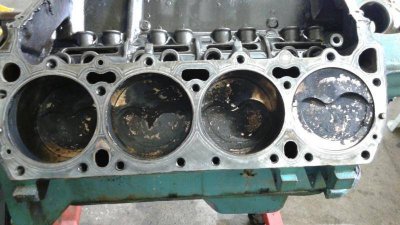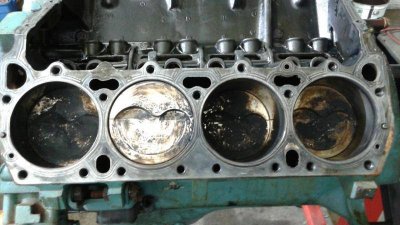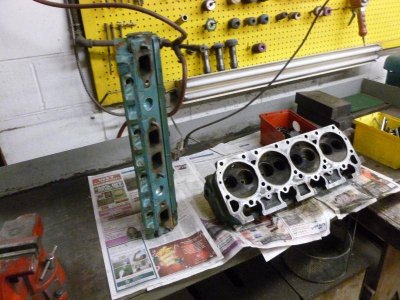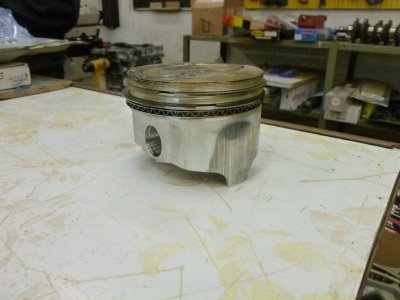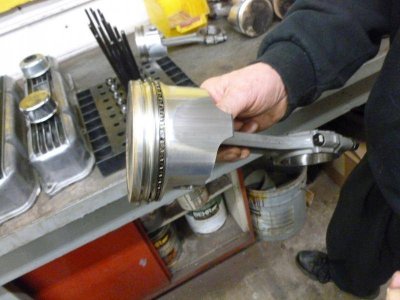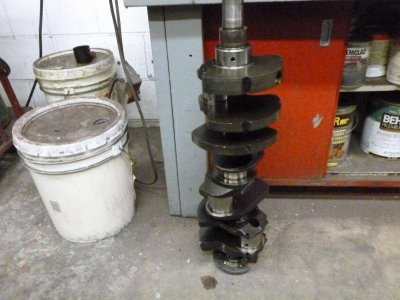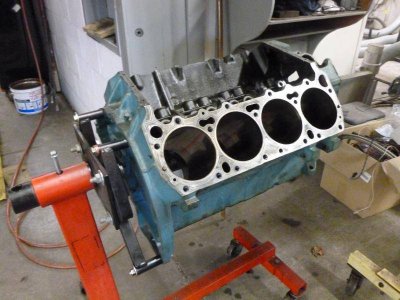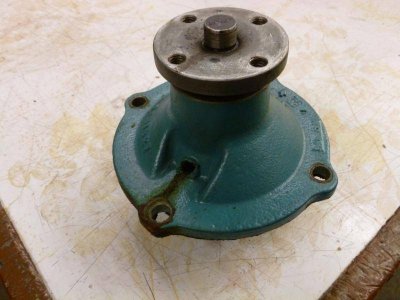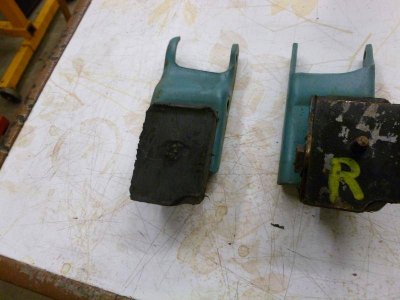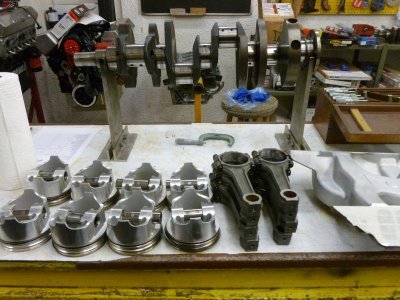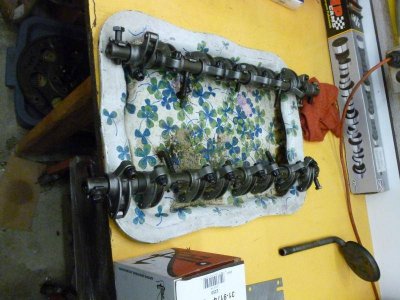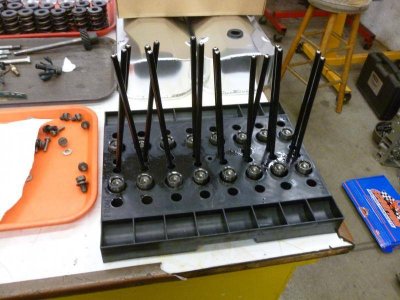Fratzog
Old Man with a Hat
Five years later another rebuild for the 440 in the Monaco. I was never completely satisfied since the motor was noisy from the get go. In the last few years it was using an increasing amount of oil. Because of this I lost faith in the original builder. My concern was validated when the new shop tore it down. Aside from evidence of massive oil consumption they found that 4 of the pistons had been installed reversed. Never knew that was possible but apparently the old time hot rodders used to do that to get more power since they didn't care about the noise. I pretty sure this was a mistake though since the wrong geometry was causing piston slap hence the noise. A couple of the KB pistons were badly scuffed. Shop suggested the pistons are known for letting oil by so we will likely go with forged pistons. We will likely keep the adjustable Pro Magnum rockers. The so called "reconditioned" heads the previous builder used had knurled valve guides which wore quickly and contributed to the oil consumption problem. We will be using bronze inserts this time. We are going with a quiet mild cam with good low end grunt Comp Cam #21-215-4. Here's a few pics and I'll try to post updates periodically.
